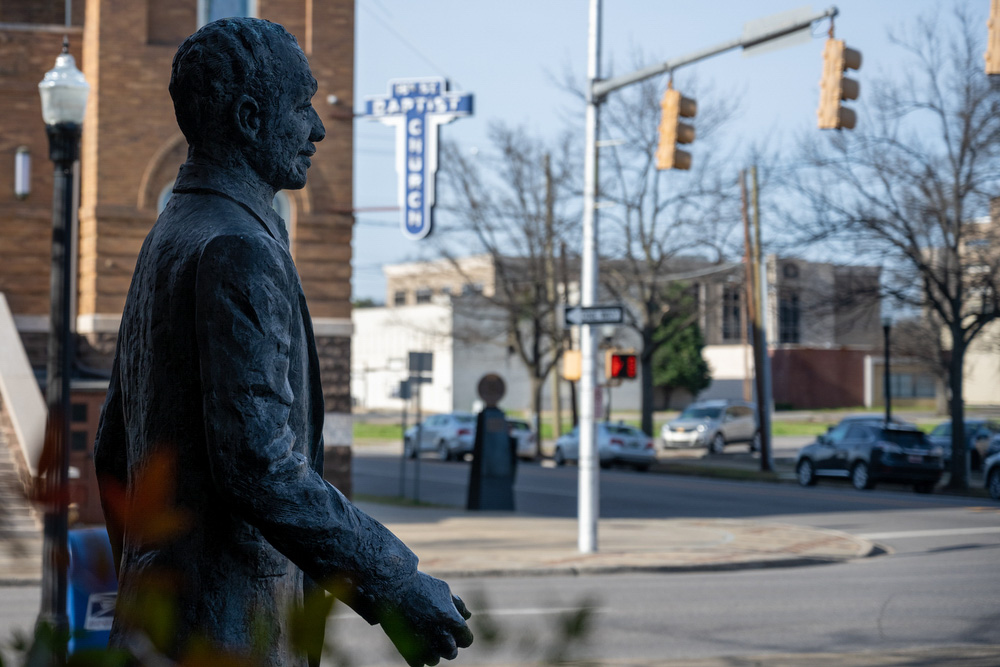This weekend my sister, my mom, and I all visited the historic Bethel Baptist Church in Birmingham, Alabama. This is the church where Fred Shuttlesworth preached. Reverend Shuttlesworth founded the Alabama Christian Movement for Human Rights. It’s an organization that had an extremely important impact on the civil rights movement. While we were at the church, we learned about what it was like to live during that time. We learned of the heroic actions Reverend Shuttlesworth took to challenge the status quo.
Segregation in the South
In the 1950s, schools throughout the nation were strictly segregated. This meant that if you were a black student who lived two blocks from a school for white students, but 10 blocks from a school for black students, you would have walked the 10 blocks. Access to education had always been a struggle for black students in Alabama—a place where there wasn’t even a school that went beyond the 8th grade for African Americans until 1900. When that school opened, black children from all over the state tried to get into it.
After the 1954 Brown vs. Board of Education Supreme Court case, Reverend Shuttlesworth tried to enroll his two daughters into a white school. He almost died that day, and someone stabbed his wife while she tried to protect her husband. A crowd of men were punching, kicking, and hitting him with brass knuckles and chains, but all he was trying to do was get his daughters a good education. The next day, after being sped away to the hospital after the attack, Reverend Shuttlesworth spoke to a massive crowd wearing a sling on his arm and a smile on his face. He didn’t let the people unwilling to change keep him down. He continued fighting to desegregate schools, buses, and all public facilities.
Prior to the civil rights movement, in all of Birmingham, only 10% of the land was zoned for neighborhoods for black residents. Many of the neighborhoods were intentionally very close to industry and railroad tracks. When I visited the church, we crossed five railroad tracks to get there, and some of the surrounding homes were abandoned.
It was also sometimes very unsafe to live in these neighborhoods. There were “juke joints” and fights that spilled over into the neighborhood. When Reverend Shuttlesworth went to the police for help in making them safer, they didn’t care. They didn’t do anything about it. So, Reverend Shuttlesworth took it into his own hands, and he organized community-wide mass meetings to unify and give hope to the community surrounding Bethel Baptist.
Segregation Laws
Ultimately, Reverend Shuttlesworth understood the laws themselves must change to protect equality. The laws defined just how segregated Alabama was. Here are some examples:
-
ORDINANCE 798-F
“It shall be unlawful for a Negro and a white person to play together or in company with each other in any game of cards, dice, dominoes, checkers, baseball, softball, football, basketball or similar games. Any person, who being the owner, proprietor or keeper or superintendent of any tavern, inn, restaurant, ball field, stadium or other public house or public place, or the clerk, servant or employee of such owner, proprietor, keeper, or superintendent, knowingly permits a Negro and a white person to play together or in company with each other, at any game with a baseball, softball, basketball or other ball, in his house or on his premises or in a house on premises under his charge, supervision or control, shall on conviction, be punished as provided in Section 4.”
-
SECTION 369: SEPARATION OF RACES
“It shall be unlawful to conduct a restaurant or other place for the serving of food in the city, at all which white and colored people are served in the same room, unless such white and colored persons are effectually separated by a solid partition extending from the floor upward to a distance of seven feet or higher, and unless a separate entrance from the street is provided for each compartment.”
These laws and countless others show how thorough the government was in defining segregation. It also shows how bizarre it is that they thought this was so important.
Future for Improvement
It is strange to think about how scared people were to allow kids of different skin colors to play together. In my school, we had to take a survey to see how diverse my friend group was. To be completely honest, it left me feeling frustrated to think that this survey would ever be needed. We should all be thinking about a person’s personality and character, not skin color.
Dr. Martin Luther King was tragically killed in 1968, but Reverend Fred Shuttlesworth lived to be 89 years old and didn’t pass away until 2011. Although Reverend Shuttlesworth saw a vast amount more progress for equality than Dr. King lived to see, he deeply understood that we still have room to improve. Our best hope for improvement comes from understanding each other and working together.
Read more about current race relations, where we’re at now and the future in “The History of U.S. Race Relations: A Guide to Understand the Present.”

